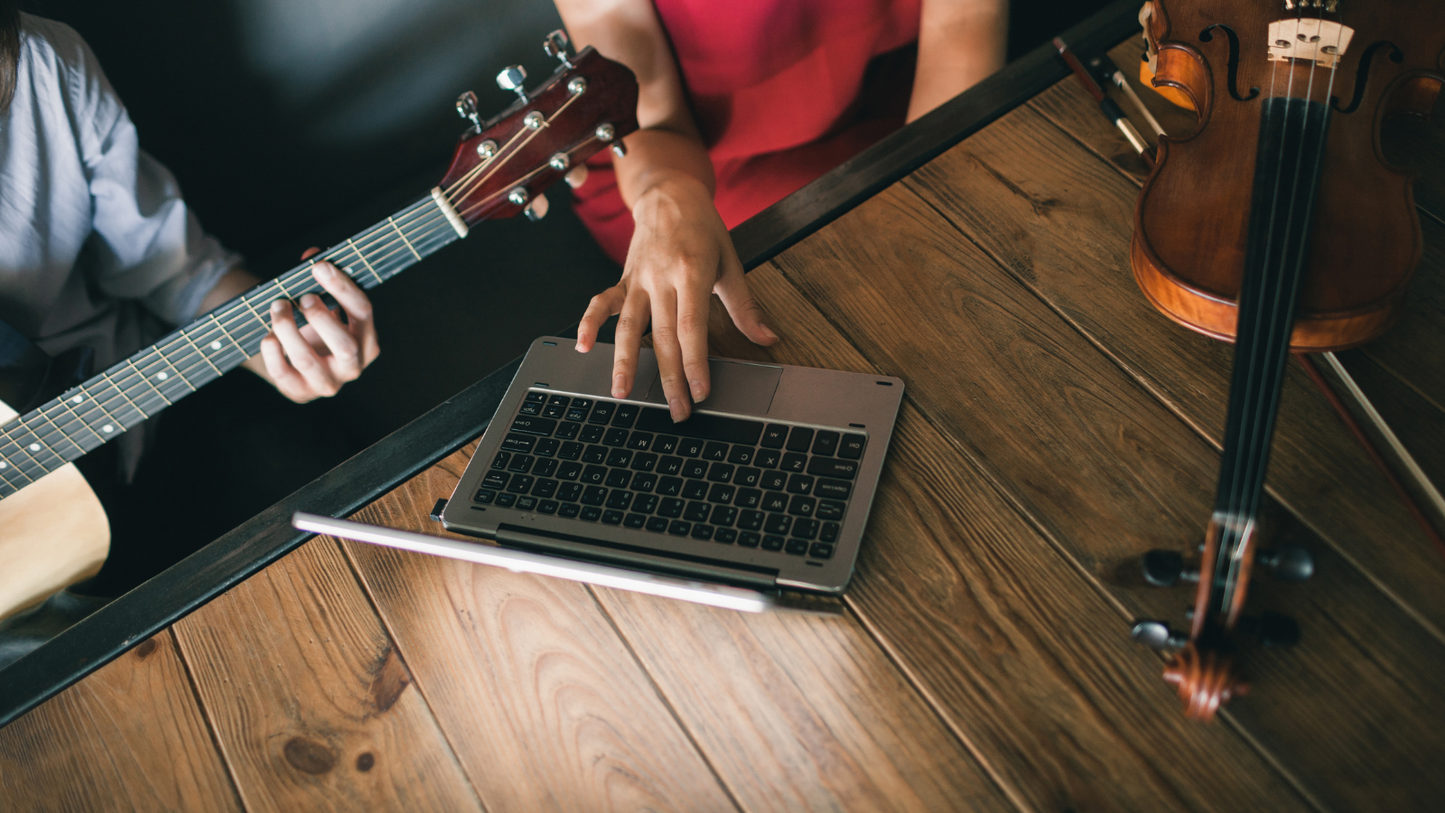
The best way to cope with this seemingly endless pandemic is to stay busy. For some, that's meant Netflix binges and sourdough bread challenges. But many musicians have been using the forced downtime to try to create new songs and albums.
The problem that many artists have encountered is that since we're all stuck at home, there's been no way to safely get in a room with bandmates and collaborators, some of whom might live far away.
For years, musicians have been using Dropbox to pass around song files so collaborators can add to or refine a piece of work. It's an effective way to work together when everyone is spread out, but many artists miss the type of chemistry you can only get when you cram a few musicians into a rehearsal space to jam on a song together in real-time, until it becomes something truly special.
Unfortunately, we're probably several months (at least) from that being a reality for most musicians. But there are other options for those yearning to approximate the creative joys of a jam session.
Jan Vogler is a world-renowned cellist who has played with the New York Philharmonic and the London Philharmonic Orchestra. He is also the co-founder of the live streaming platform Dreamstage, which has hosted over 40 concerts in genres ranging from country to hip-hop to rock. With his feet in both the musician and tech expert worlds, he has a few thoughts about how artists can use live streams to stay creative despite great distances.
"With a well-organized live-stream you can have a global reach. And, you can be truly interactive with your audience," says Vogler. Dreamstage and other livestreaming tools such as Facebook Live, Instagram Live and Twitch have the option to engage with viewers via fan chats and social feed integration.
But live streams aren't just for concerts. They can also be used "to create together," says Vogler. "Have goals and imagine the future, and do that on Zoom rather than on the phone. Talk a lot and make plans and don't rely on the world and our music business to come back to pre-Covid standards."
But don’t just talk on Zoom. Create on Zoom. Of course, "Zoom and other communication tools can help to be in visual contact while you are mixing sounds, but we are a few years away from producing in sync video and audio remotely in real-time," admits Vogler. Collaborators should set-up a time when everyone can Zoom in together for virtual jam sessions. Use it to play songs-in-progress to get everyone’s opinion, as well as to put finishing touches on music that’s almost complete.
There are going to be technology snags and buffering headaches, but at the moment it's the closest many artists can come to recreating the practice room. If the songwriting sessions don't flow as naturally as they would when everyone is together, a Zoom jam session can still lead to ideas that can later be refined, either virtually or in-person when the pandemic ends.
In addition to Dropbox and Zoom, there are several other software programs and digital tools that artists might want to give a shot. Some of them come with virtual chat features, but you can always organize a session where you and your collaborators Zoom in-together while using the programs to refine your songs in real time. It’s not like being in the basement together, but for now it’s a way to stay creative.
- Pibox Music is helpful if everyone in the band has home-recording studios, and you're all trying to figure out the right mix. In addition to live chat and screen-sharing features, you can make notes on the mix as markers in the audio tracks and upload newly remixed audio files easily.
- Soundtrap features an easy-to-use interface and has a feature where you can invite collaborators to join the virtual sessions.
- NINJAM is an open-source software that allows musicians to collaborate...almost in real time. The program embraces the "latency" inherent in internet-music making, which means that artists play along with the previous jam their bandmate laid down, and they play with yours, rather than everyone trying to play at the same time. The developers insist you will get used to this.
- NINJAM can be paired easily with Jambata, which can be used to facilitate jam sessions around the world. Looking for new people to play with? You might find them here!
- Bandlab is a great tool if you're into making beats and collaborating on dance and hip-hop tracks. It comes with royalty free loops and samples, and real-time collaborative software.
- Soundtrap is owned by Spotify, and is designed to be easy to use for beginners and to facilitate seamless collaboration.
Of course, technology can only do so much. You've also got to stay positive and get your mindset correct. It's a challenging time, but Vogler urgets artists to plan "for the time when we can see each other and can make music together and incorporate the learnings," he says.
"The virtual music community is growing and advancing, we as musicians have to embrace this new medium with all our creativity and energy in order to lead our audiences into the future."
